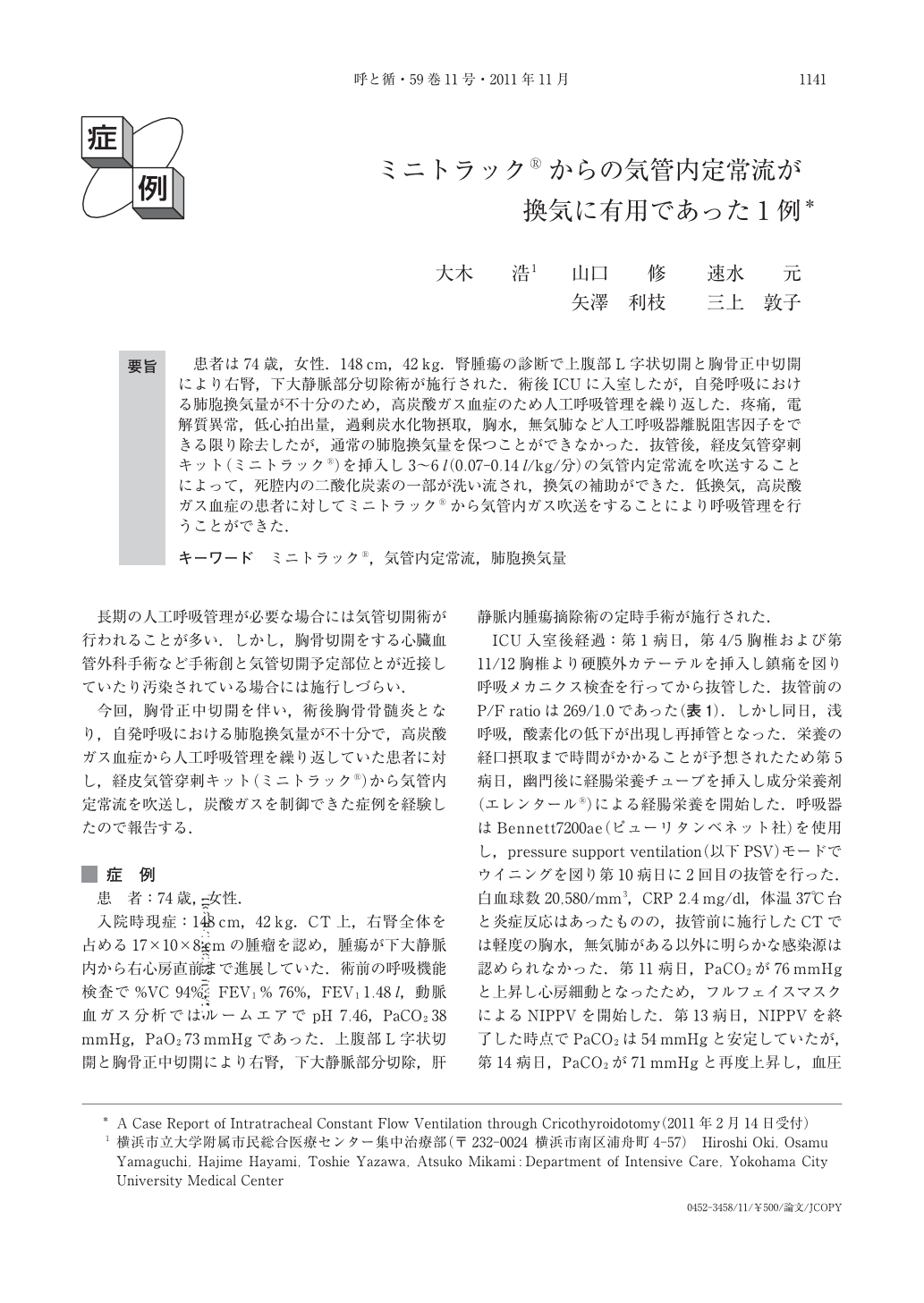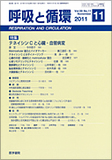Japanese
English
- 有料閲覧
- Abstract 文献概要
- 1ページ目 Look Inside
- 参考文献 Reference
要旨 患者は74歳,女性.148cm,42kg.腎腫瘍の診断で上腹部L字状切開と胸骨正中切開により右腎,下大静脈部分切除術が施行された.術後ICUに入室したが,自発呼吸における肺胞換気量が不十分のため,高炭酸ガス血症のため人工呼吸管理を繰り返した.疼痛,電解質異常,低心拍出量,過剰炭水化物摂取,胸水,無気肺など人工呼吸器離脱阻害因子をできる限り除去したが,通常の肺胞換気量を保つことができなかった.抜管後,経皮気管穿刺キット(ミニトラック®)を挿入し3~6l(0.07-0.14l/kg/分)の気管内定常流を吹送することによって,死腔内の二酸化炭素の一部が洗い流され,換気の補助ができた.低換気,高炭酸ガス血症の患者に対してミニトラック®から気管内ガス吹送をすることにより呼吸管理を行うことができた.
Case:A 74-year-old woman(148cm, 42kg)with right kidney tumor underwent nephrectomy and partial excision of the inferior vena cava by an L-shaped incision in the upper abdomen and by median sternotomy. After her admission the ICU, extubation and intubation were repeated because of hypercapnea due to reduced tidal volume. In spite of removal of factors preventing her weaning from the ventilator, such as pain, electrolyte abnormality, low cardiac output, excessive carbohydrate intake, pleural effusion and atelectasis,sufficient tidal volume could not be maintained.
She underwent transcutaneous cricothyroidotomy(Mini-TrachTM)after extubation and a constant flow of 3-6L/min was insufflated through the cricothyroidotomy.
After the procedure, without mechanical ventilatory support, she was able to keep normocapnea. We speculated that, part of the CO2 circulating in the dead space was wasted out enough to achieve normocapnea, and ventilatory support was able to be achieved. Conclusion:We successfully managed a patient with low tidal volume and hypercapnea by sending an intratracheal constant fow through Mini-TrachTM.

Copyright © 2011, Igaku-Shoin Ltd. All rights reserved.


